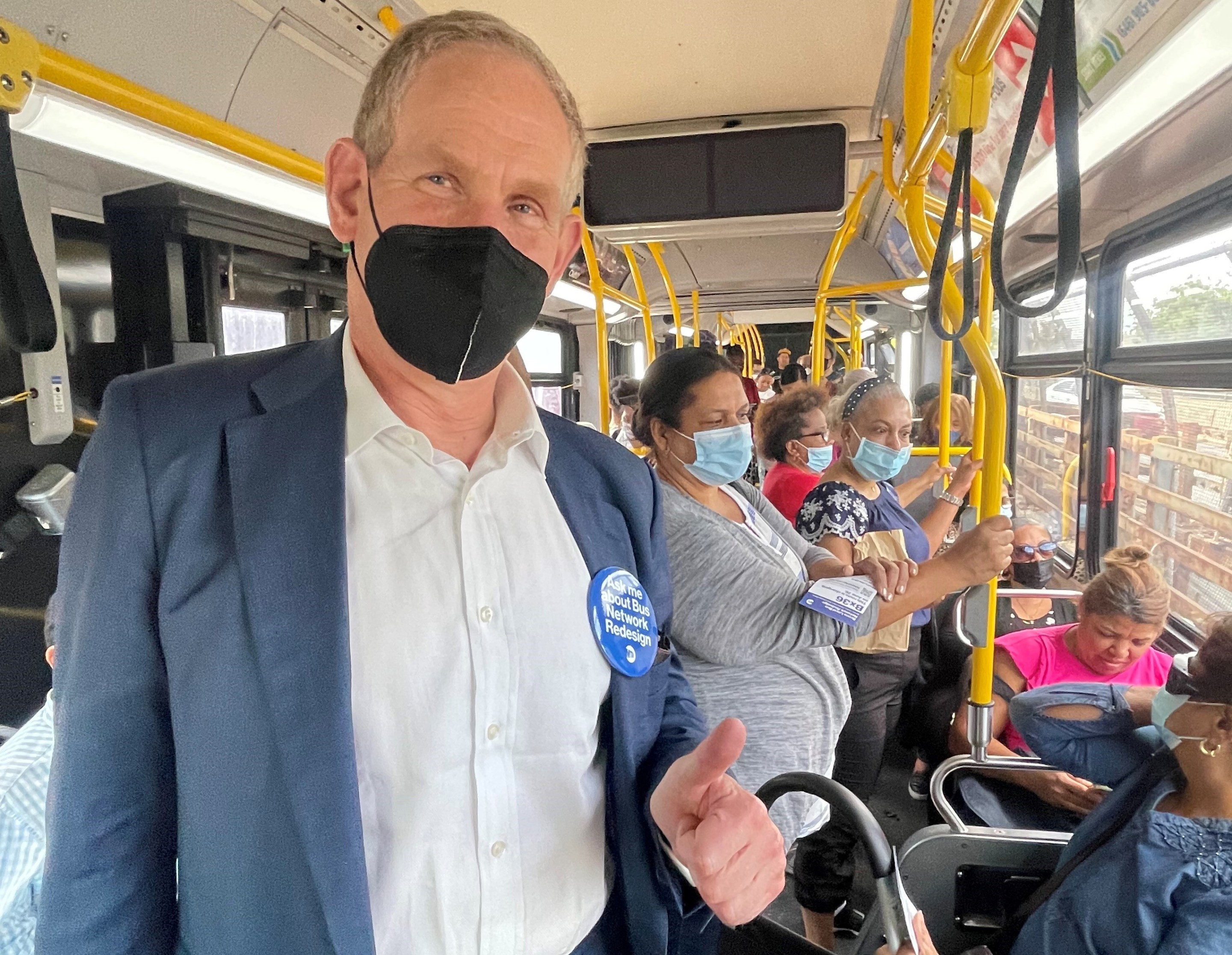The MTA’s top official threw cold water Wednesday on stalled plans to allow all-door boarding on city buses — dismissing the well-established benefits of the policy as merely a "hypothesis."
Speaking to reporters after the MTA’s monthly board meeting, authority CEO Janno Lieber said it would be unfair to allow tap-and-go back-door entry when most bus riders have yet to adopt the new OMNY fare system.
"What we want to do is make sure that the OMNY system is widely enough implemented that we won’t have a class structure about who can go on the back door," Lieber said.
"It’s one, not fair to a lot of people who are not yet OMNY users, and it’s not gonna do much to your hypothesis that it will dramatically improve speeds."
All-door boarding has led to reductions in the time it takes to load and unload passengers in place where it has been implemented — including New York, where the MTA has had the policy on its Select Bus Service routes for 15 years and counting.
Currently only about one in five people use OMNY to pay the fare on buses, he said. Uptake is around 40 percent on subways, officials said.
"Better OMNY penetration is a clear precondition" to all-door boarding, Lieber said Wednesday.
All-door boarding has long been a goal of transit advocates. Transit officials first committed to the policy in 2018 as part of then-New York City Transit President Andy Byford’s "Bus Action Plan."
The installation of readers for OMNY's contactless payment system — which opened the logistical door to all-door boarding — wrapped up on city buses in 2021, but officials have still declined to pursue the policy.
Months passed without word after officials announced a modest pilot to test all-door boarding on 10 routes in August 2021. Lieber officially confirmed the pilot's delay in March 2022, citing low rate of OMNY use while making no indication when the agency might revive those efforts.
"I wouldn’t say it’s not happening," he said at the time. "I think we need to think about how do we get there and do it in a real way that makes it possible for everybody to use the back door because their fare payment options will be available."
Lieber also claimed he was holding off on the upgrade because OMNY wasn't available yet for reduced-fare or student MetroCard holders; the agency has since introduced plans to roll out reduced fare OMNY options.
Transit officials have previously cited that fare evasion fears as a source of their hesitation to roll out all-door boarding — and even ordered bus drivers last year to not automatically open their back doors as a means of thwarting non-paying riders.
Advocates slammed the transit big for stonewalling the activation of back-door OMNY readers despite ample evidence in New York City and elsewhere that all-door boarding speeds up buses.
"It’s grasping at straws," said Danny Pearlstein of Riders Alliance. "We can’t leave anything on the table here. We’re utterly failing bus riders every day with slow and unreliable service."
Experts with the National Association of City Transportation Officials found opening all doors does indeed "dramatically speed up service and improve reliability," something officials have realized in global cities including Berlin, Copenhagen, and San Francisco.
Dwell times decreased by up to 40 percent after all-door boarding implementation on the MTA's Select Bus Service routes, where riders pay at stops and then board through all doors.
Lieber — who has called buses "engines of equity" for carrying passengers that tend to be lower income than other commuters — said Wednesday that those same riders will have to continue waiting at the front door until more of them use OMNY.
Timing for all-door boarding will depend on when OMNY becomes the main method for a majority of bus riders, an MTA spokesman said.
Straphangers could be waiting a long time if there isn't more incentive to use the new payment system, such as being able to get on at the back, Pearlstein warned.
"It’s such a piece of low-hanging fruit and it still hasn’t been implemented to speed up the nation’s slowest buses," he said. "I understand that Janno wants everyone to pay the fare, but slowing down the bus is not gonna make that happen."
Additional reporting by Dave Colon






